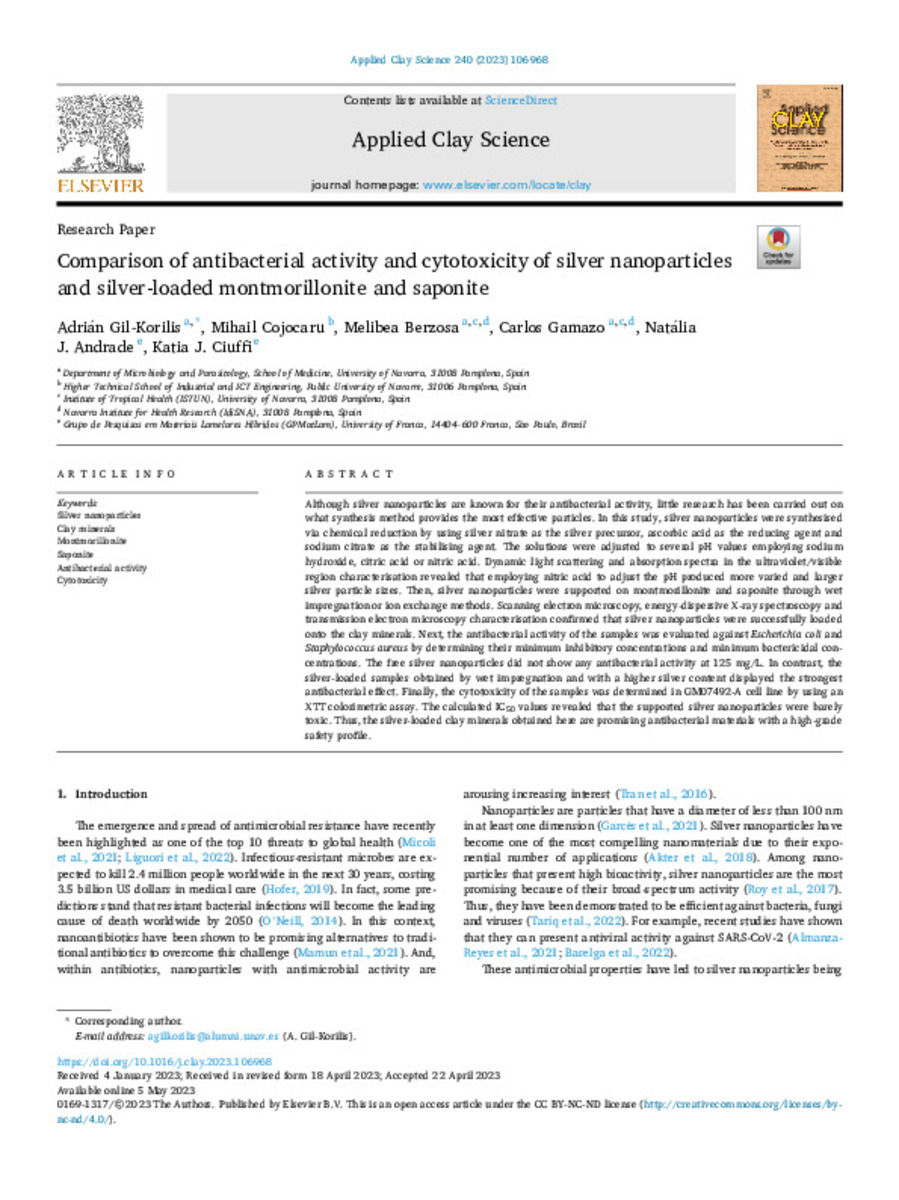Comparison of antibacterial activity and cytotoxicity of silver nanoparticles and silver-loaded montmorillonite and saponite
Keywords:
Silver nanoparticles
Clay minerals
Montmorillonite
Saponite
Antibacterial activity
Cytotoxicity
Project:
2020/06712-6
305180/2019-3
Note:
This is an open access article under the CC BY-NC-ND license
Citation:
Gil-Korilis, A. (Adrián); Cojocaru, M. (Mihail); Berzosa-Suñer, M. (Melibea); et al. "Comparison of antibacterial activity and cytotoxicity of silver nanoparticles and silver-loaded montmorillonite and saponite". Applied Clay Science. 240, 2023, 106968
Statistics and impact
0 citas en

0 citas en

Items in Dadun are protected by copyright, with all rights reserved, unless otherwise indicated.










